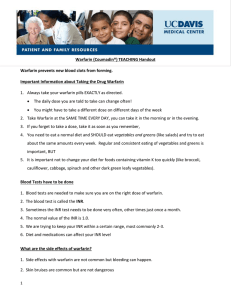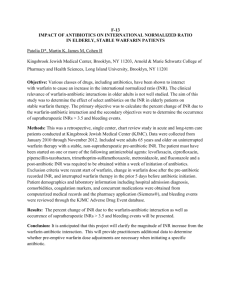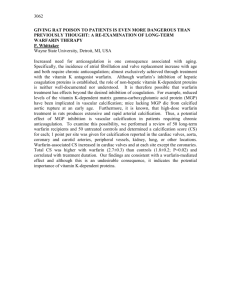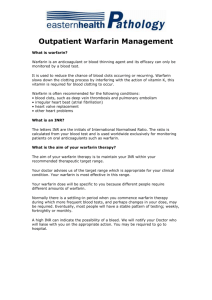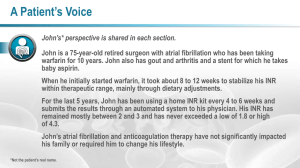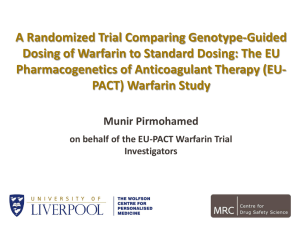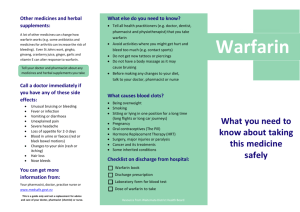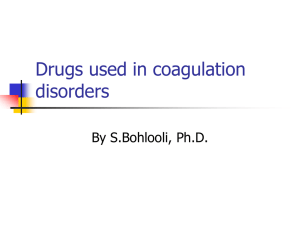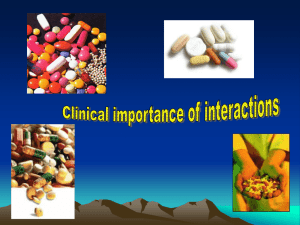SAQ 3 - GCS 16
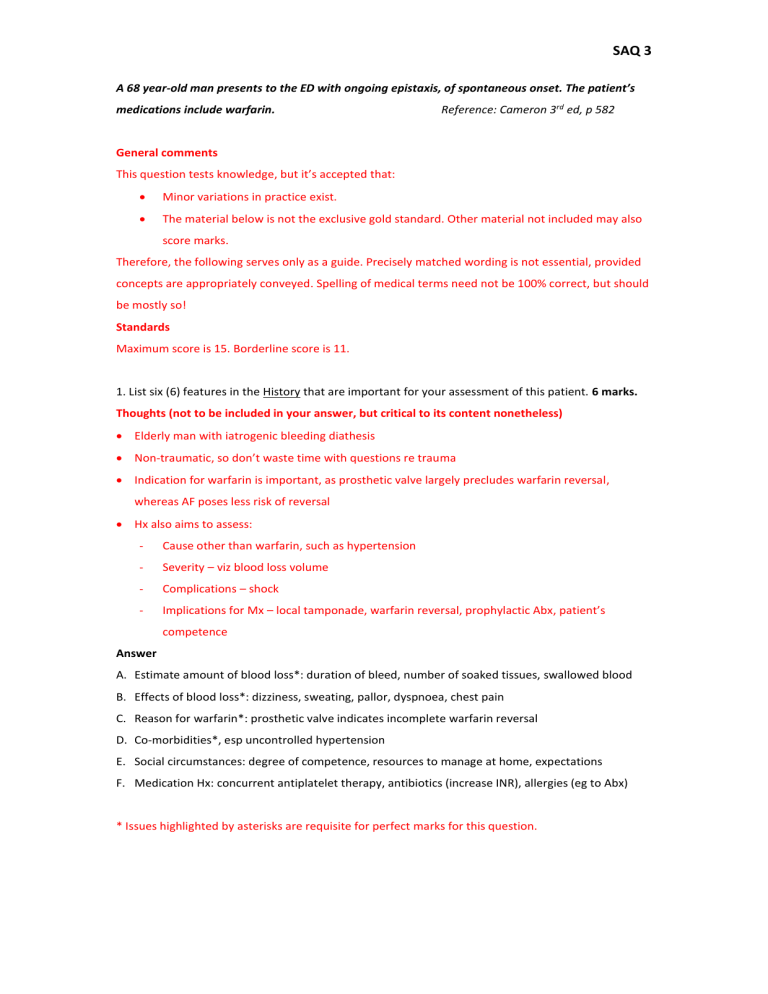
SAQ 3
A 68 year-old man presents to the ED with ongoing epistaxis, of spontaneous onset. The patient’s medications include warfarin. Reference: Cameron 3 rd ed, p 582
General comments
This question tests knowledge, but it’s accepted that:
Minor variations in practice exist.
The material below is not the exclusive gold standard. Other material not included may also score marks.
Therefore, the following serves only as a guide. Precisely matched wording is not essential, provided concepts are appropriately conveyed. Spelling of medical terms need not be 100% correct, but should be mostly so!
Standards
Maximum score is 15. Borderline score is 11.
1. List six (6) features in the History that are important for your assessment of this patient. 6 marks.
Thoughts (not to be included in your answer, but critical to its content nonetheless)
Elderly man with iatrogenic bleeding diathesis
Non-traumatic, so don’t waste time with questions re trauma
Indication for warfarin is important, as prosthetic valve largely precludes warfarin reversal, whereas AF poses less risk of reversal
Hx also aims to assess:
Cause other than warfarin, such as hypertension
Severity – viz blood loss volume
Complications – shock
Implications for Mx – local tamponade, warfarin reversal, prophylactic Abx, patient’s competence
Answer
A.
Estimate amount of blood loss*: duration of bleed, number of soaked tissues, swallowed blood
B.
Effects of blood loss*: dizziness, sweating, pallor, dyspnoea, chest pain
C.
Reason for warfarin*: prosthetic valve indicates incomplete warfarin reversal
D.
Co-morbidities*, esp uncontrolled hypertension
E.
Social circumstances: degree of competence, resources to manage at home, expectations
F.
Medication Hx: concurrent antiplatelet therapy, antibiotics (increase INR), allergies (eg to Abx)
* Issues highlighted by asterisks are requisite for perfect marks for this question.
2. The patient is bleeding only from Kiesselbach’s plexus (Little’s area). He is haemodynamically
SAQ 3
stable. Outline six (6) steps you would take to control his epistaxis. 6 marks.
Thoughts (not to be included in your answer, but critical to its content nonetheless)
Complete and persistent haemostasis is the target; recurrent bleeding risk is high
Strategies: Local effects, optimising coagulation profile and prevention
Answer
A.
General: reassure, sit patient up, firm external pressure* to nares while equipment prepared
B.
Suction blood and clots from nostril
C.
Topical constrictor* agent: cotton pledgelets soaked with lignocaine/adrenaline or Cophenylcaine
Forte to Little’s area
D.
Chemical cautery with Ag nitrate sticks
E.
If persistent bleeding despite the above, anterior packing with 0.5 inch gauze soaked with constrictor
F.
Optimise INR*: reverse warfarin with vitamin K if appropriate: <2 if warfarin for AF, and close to 2 for prosthetic valve
* Issues highlighted by asterisks are requisite for perfect marks for this question. Cautery AND/OR tamponade (one alone suffices) also requisite.
3. List three (3) pieces of advice you would give him on discharge. 3 marks.
Answer
A. General*: Do not pick or blow nose for at least 4 days; moisturize nostrils with Vaseline or chloromycetin eye ointment.
B. If warfarin withheld, seek rv* for repeat INR and recommencement of warfarin.
C. Indications for ED return*: recurrent bleed and / or if anterior pack in situ that needs removal.
* Issues highlighted by asterisks are requisite for perfect marks for this question.
